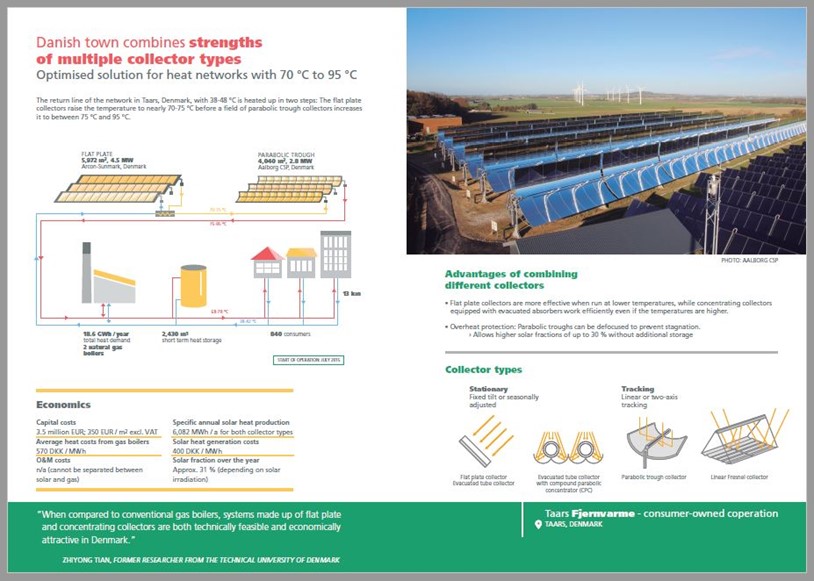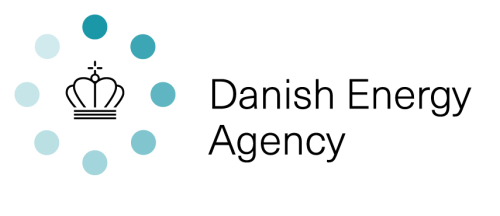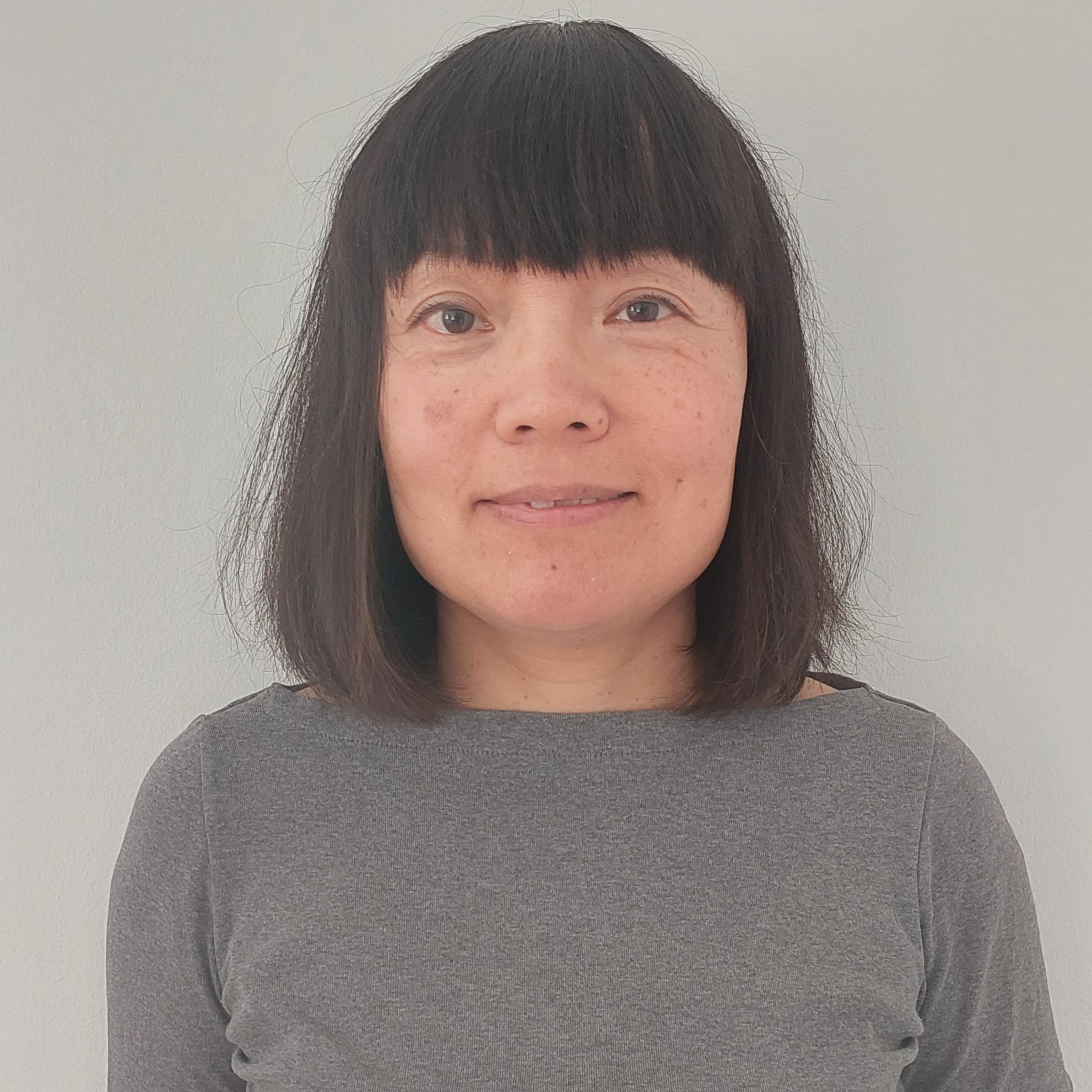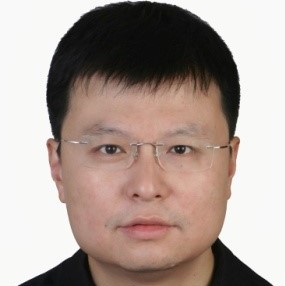Further developments will presumably not focus mainly on component development, but on optimal use of available technologies. In a pilot plant in the Danish town Taars ( Figure 11) which was put into operation in August 2015, flat plate solar collectors (FPCs) and parabolic trough solar collectors (PTCs) have been combined for the first time. The plant consists of 5,960 m2 FPCs (of which half are single glazed without foil, half are single-glazed with foil) and 4,039 m2 PTCs connected in series. Each collector type operates on a temperature level where its efficiency is high (FPCs between 40 and 75 °C, PTCs between 75 and 95 °C).

Solar district heating project in Taars
In the smart cross-sector energy system of the future, which links smart electricity and thermal and gas grids, there will be an increased interaction of solar thermal heat supply with other technologies, e.g. electric heat pumps driven by wind power or excess wind power converted to heat (power-to-heat). Digitalisation provides an opportunity to reduce the overall cost of decarbonizing DH by optimizing the operation and introduction of new business models . Economic and environmental potential analyses for solar assisted central heating plants in the EU residential sector showed that a solar fraction above 90% can be achieved for many EU climate zones. With more and more penetration of volatile renewable electricity such as photovoltaic and wind into electricity grids in the near future, the mismatch of electricity supply and demand will increase. Long-term and short-term thermal storages are a cost-efficient option to add flexibility, as electricity storage is much more expensive than thermal storage. Seasonal heat storages can be used both for solar heat and for excess electricity converted to heat, which increases the number of load cycles and reduces the cost of storages. Seasonal thermal energy storage systems should be further analyzed to make solar heat available in winter. In energy systems with a high share of renewables, solar thermal heat supply will compete with other renewable technologies. Here, the advantage to save CO2 emissions compared to fossil fuels is not decisive anymore and needs to be replaced by other reasons, e.g. easing the pressure on scarce renewable resources like biomass. Large-scale solar thermal systems which are part of district energy systems can benefit from 4th generation DH networks with supply temperatures of 40–50 ˚C, or even lower. Low supply temperatures increase the efficiency of collectors and increase the storage capacity and utilization.
An advantage that is largely neglected is the long-term price stability of large-scale solar thermal systems as O&M costs are very low. Solar thermal heat supply is typically associated with high financial risks. The use of risk minimizing strategies could turn the perceived disadvantage into an asset.
Share this
Sectors: Cities, District energy
Country / Region: Denmark
Tags: carbon, cities, energy efficiency, flat plate collectors, flat plates, parabolic trough, solar, solar thermal collectors, temperatureIn 1 user collection: Sino-Danish Clean and Renewable Heating Cooperation Centre – Library
Knowledge Object: User generated Initiative
Publishing year: 2022




